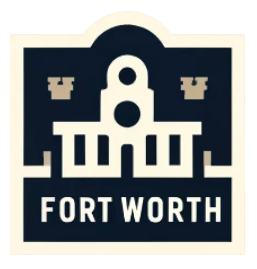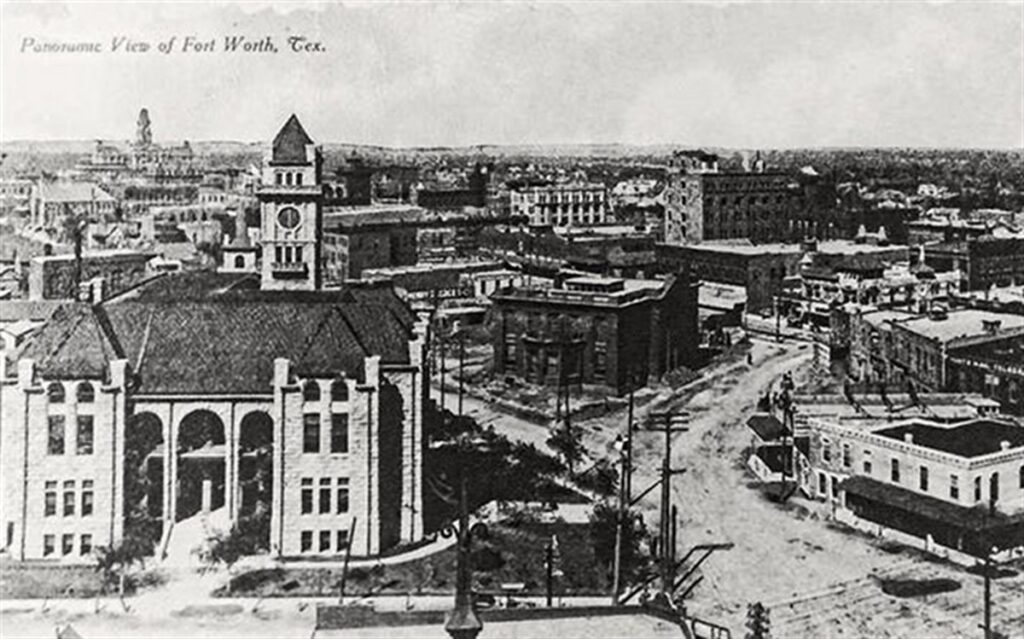
Exploring Fort Worth’s Historic Districts

In the Texas metropolis of Fort Worth, modernism and heritage coexist peacefully. Exploring Fort Worth’s historic districts, which are well-known for their thriving cultural scene and rich Western heritage, provides a window into the past while welcoming the future. Fort Worth’s historic districts provide something for everyone, whether you’re an enthusiast for architecture, history, or just wanting to explore.
Introduction to Fort Worth’s Historic Districts
Fort Worth’s historic districts reflect the city’s transformation from a frontier outpost to a thriving urban center. These places preserve the architectural magnificence and cultural value of bygone times, acting as living museums.
A Brief History of Fort Worth
Fort Worth, which began as an Army outpost in 1849, developed swiftly into a significant cattle town and commerce hub. Once the railroad arrived in the 1870s, it became a thriving hub of trade. Fort Worth is renowned today for its rich historical tapestry, diversified economy, and flourishing arts scene.
Significance of Historic Districts
Fort Worth’s historic districts are essential to maintaining the city’s legacy. They provide a distinctive fusion of the old and the new, with contemporary companies housed in historic buildings and streets resonant with historical narratives. These neighborhoods promote a sense of continuity and community, in addition to upholding the city’s architectural integrity.
The Fort Worth Stockyards
The Stockyards, one of Fort Worth’s most famous historic districts, is a must-see for anybody curious about the history of the West in the city.
Birth of the Stockyards
During the late 1800s, the Fort Worth Stockyards were a major livestock market. With its rapid growth to become one of the biggest and busiest livestock markets in the nation, Fort Worth gained the moniker “Cowtown.”
Stockyards National Historic District
The Livestock Exchange Building and the Stockyards Hotel are only two of the many historic structures in the Stockyards that have been designated as National Historic Districts. These buildings provide a concrete link to the past and let guests travel back in time.
Modern Attractions at the Stockyards
The Stockyards now combine entertainment and history. Cattle drives, rodeos, and the Texas Cowboy Hall of Fame are available to visitors. In addition, the region offers a wide variety of dining options, retail establishments, and live music venues, offering a thorough immersion in Western culture.
Preserving History at the Stockyards
The Stockyards are home to numerous preservation initiatives that guarantee the district’s historical relevance is preserved while allowing for contemporary growth. Education initiatives and restoration projects contribute to preserving heritage for upcoming generations.
Sundance Square
The center of downtown Fort Worth is Sundance Square, which has a vibrant blend of modern and historic attractions.
Origin and Development
Sundance Square, named for the infamous outlaw known as the Sundance Kid, has transformed from a rough-and-tumble frontier town into a thriving urban quarter. It was essential to Fort Worth’s early growth as a commercial and cultural hub.
Architectural Highlights
Sundance Square is home to a mix of modern and antique building styles. The Sinclair Building and the Jett Building, two magnificently preserved structures, stand alongside more contemporary buildings to create a visually compelling setting.
Cultural and Entertainment Hub
Sundance Square is a center of culture and entertainment, with a variety of restaurants, galleries, and theaters. The district’s focal point is the Bass Performance Hall, which features breathtaking architecture and world-class performances.
Future Plans for Sundance Square
With further projects in the works, Sundance Square hopes to improve its allure. Plans call for adding more cultural and entertainment establishments, improving pedestrian walkways, and enlarging green areas.
Near Southside District
Fort Worth has demonstrated its ability to renew itself while paying homage to its past through the Near Southside District.
Historical Background
Over the past few decades, Near Southside—which was once primarily residential and commercial—has experienced substantial upheaval. New construction and the adaptive reuse of historic buildings have revitalized the area.
Transformation and Revitalization
Near Southside revitalization initiatives have prioritized maintaining the neighborhood’s historic charm while promoting contemporary development. Projects like the Magnolia Avenue redevelopment project have made the neighborhood a thriving center of the community.
Key Landmarks and Attractions
Several important landmarks, such as the Southside Preservation Hall and the historic Texas & Pacific Station, are located close to Southside. These locations provide an insight into the district’s lengthy past and current changes.
The Arts and Food Scene
The area is well-known for its vibrant culinary and artistic scenes. There are lots of theaters, art galleries, and live music venues, in addition to a wide variety of eateries and bars that provide a range of culinary experiences. The district’s artistic energy is emphasized via events such as the ArtsGoggle festival.
Fairmount Historic District
One of Fort Worth’s greatest historic districts, Fairmount is well-known for its thriving community and quaint Victorian-era homes.
Victorian-Era Charm
The architecture of the late 19th and early 20th centuries is on display in Fairmount. Beautifully restored Victorian residences, Craftsman bungalows, and Prairie-style homes are scattered around the tree-lined lanes.
Notable Residences
Fairmount is home to a number of notable residences, including the magnificent Ball-Eddleman-McFarland House, which is a prime example of Queen Anne architecture. Walking tours of the neighborhood provide an understanding of the historical background and architectural styles of these homes.
Community Events and Festivals
All year long, Fairmount is the site of several festivals and community gatherings. Visitors from all over the region come to the yearly Fairmount Home Tour and Arts Fair to celebrate the district’s distinctive history and active community.
Preservation Efforts
Fairmount has robust preservation initiatives, with locals taking an active part in preserving the neighborhood’s historic charm. Entities such as Historic Fort Worth, Inc. are essential to these endeavors because they offer advocacy and resources for preservation.
Cultural Impact of Fort Worth’s Historic Districts
Historic districts in Fort Worth have a significant influence on the local economy, culture, and way of life.
Influence on Local Culture
These neighborhoods are hubs of culture, inspiring both locals and tourists to have a profound respect for history and legacy. They emphasize Fort Worth’s distinctive fusion of Western and contemporary influences and add to the city’s identity.
Tourism and Economic Contributions
World travelers are drawn to historic neighborhoods, which are popular tourist destinations. Their contributions to the tourist, hotel, and retail industries have a substantial impact on the local economy. These regions will remain important resources for the city as long as they are preserved.
Community Engagement and Education
Historic districts are useful educational tools that provide chances for learning and community involvement. Public education on Fort Worth’s past is provided through programs and tours, which instill in locals a feeling of pride and responsibility.
Exploring Fort Worth’s Hidden Gems
Fort Worth is home to a number of lesser-known locations that provide distinctive historical perspectives outside of the well-known historic areas.
Lesser-Known Historic Sites
Undiscovered treasures like the Log Cabin Village and the Thistle Hill Mansion provide intriguing windows into the past. These locations provide a more personal look into Fort Worth’s past because they are frequently less crowded.
Unique Walking Tours
Discovering Fort Worth’s hidden treasures and historic neighborhoods is best done on a walking tour. Self-directed excursions enable a slower pace, but guided tours offer in-depth information and anecdotes.
Insider Tips for History Enthusiasts
For history buffs, there are ways to improve their experience, such as going off-peak, talking to local historians, and discovering lesser-known locations. The historic districts of Fort Worth are full of undiscovered gems.
Conclusion
The historic districts of Fort Worth serve as a testament to its rich past and promising future. They are essential stops for anybody visiting Fort Worth since they provide a distinctive fusion of historical, cultural, and contemporary attractions. The city makes sure that its past is still very much a part of its present and future by keeping these locations preserved.
FAQs
What makes Fort Worth’s historic districts unique?
The historic districts of Fort Worth are distinctive because they combine vibrant modern facilities with historically significant buildings that have been conserved.
Which historic district in Fort Worth is the best for families?
Families love the Fort Worth Stockyards because of its kid-friendly attractions, which include interactive museums and cattle drives.
How has the Near Southside District evolved over the years?
The Near Southside District, once mainly a residential neighborhood, is now a thriving community center with a thriving culinary and artistic scene.
Are there any free activities in Fort Worth’s historic districts?
Indeed, there are a lot of free events, walking tours, and public art installations in historic districts.
What is the best time of year to visit Fort Worth’s historic districts?
The greatest seasons to travel are spring and fall, when the weather is ideal for taking in outdoor sights and festivals.
How can I support the preservation of Fort Worth’s historic districts?
There are many ways to get involved, like supporting regional preservation groups, attending neighborhood gatherings, and speaking up in favor of historic preservation laws.
